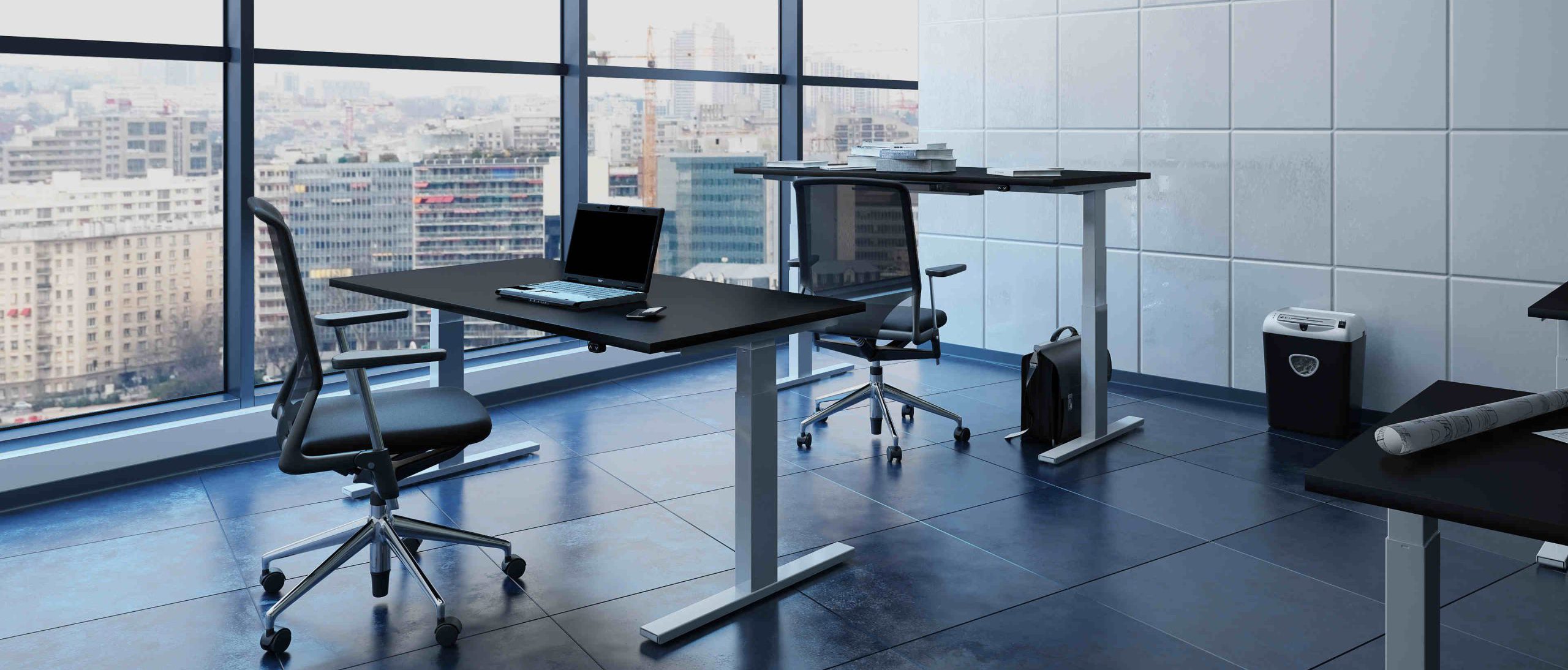Gas sprung, electronic or manual? Choosing a height adjustable desk
Kitchen organisation hacks
Electrical Safety in the office
Office design to future proof your office
Hole saw for hire service
Harness that ‘back to school’ feeling when you’re back to work with these office hacks
Choosing the kitchen storage system for your space
Novel desk legs and why you need them
The real reason extendable tables are more popular than ever
The popular extending table that’s perfect at any height
How to use a standing desk | 6 Tips
Here at BOX15, we offer a wide range of height adjustable workstations, standing desk frames and standing desk accessories so that you can complete your standing desk set up correctly.
To help you out, we wanted to give you our 6 top tips for using a standing desk correctly; so that you can maximize the benefits at hand and minimize the negative effects.
1. Alternate Between Sitting and Standing
We all know that sitting for extended periods is bad for your health. However, the same goes for standing over long periods as well.
Standing still for long periods can negatively impact your leg muscles and joints and can result in inflammation of the veins. Studies have also found links between lower back pain in standing occupations, such as production line employees and factory workers.
Fortunately, this can be avoided simply by alternating between sitting and standing. In fact, studies suggests a ratio of 1:1 or 2:1 sitting versus standing looks to be the optimal formula; meaning for every 1 to 2 hours you sit in your office, 1 hour should be spent standing. Try to alternate between sitting and standing every 30 to 60 minutes.
Here at BOX15, we offer a wide range of sit stand desks which you can view online HERE.
2. Adjust Your Desk and Computer Screen
Having the correct desk height and computer screen position is an often overlooked but essential element for improving and avoiding aches and pains.
First of all, you’ll need to set your standing desk at about elbow height, so that they are in a 90-degree position from the floor.
Next, you’ll need to adjust the screen position. While there are no set guidelines for how your screen should be positioned, the general rules is to have it set back 20–28 inches (51–71 cm) from your face.
The top of your screen should be at eye level, with a slight upwards tilt of between 10 and 20 degrees. Subsequently, you won’t need to tilt your neck up or down.
3. Consider an Anti-Fatigue Mat
Anti-fatigue mats are often used in jobs that require staff to stand on hard floors over extended periods, such as assembly lines / factory workers, kitchen workers and at shop counters.
Standing mats can help to improve venous return which is achieved by promoting micro-movements in the leg muscles, which are enough to keep the user slightly off balance and subsequently, they will be constantly adjusting their feet rather than remaining in a completely static position. In addition, when using anti-fatigue mats, these micro-movements engage the circulatory system (or more specifically, the peripheral venous pump) which moves blood to the heart via contraction of muscles in the foot, and the compression of the plantar vein when pressure is applied to the foot.
Anti-fatigue mats can also help to improve posture as it allows you to evenly distribute weight across both legs while standing, rather than shifting weight and causing one leg to support more than the other.
Ultimately, if you’re required to stand for 2 or more hours a day, then an anti-fatigue mat would be worth looking into.
We’ve recently added a stylish anti-fatigue mat to our range of standing desk accessories, which you can view online HERE.
4. Position Your Keyboard and Mouse Correctly
Another easily and often missed element is the position of your wrists when working at a standing desk. Working long hours can put strain on them, and so it’s important to have your wrists correctly positioned.
When standing, the ideal angle is to have your wrists tilted slightly upwards compared with when sitting. It is also important to keep your keyboard and mouse at the same level, and your wrists straight when typing.
For further wrist support, consider using an adjustable keyboard stand and a gel mouse pad.
Here at BOX15, we offer an innovative under desk ergonomic mouse pad with pen storage and 360º Swivel. To view our mouse pad online, click HERE.
5. Consider Arm Supports
Arm supports are a type of soft padding that attaches to your desk and is designed to reduce pressure on the wrist that is operating the mouse.
Research has shown that arm supports can reduce and even prevent the risk of developing neck and shoulder problems; and so these are a worthwhile investment if you are someone who suffers from neck and shoulder problems on the side of your dominant hand.
6. Remember to Take Short Breaks
As mentioned earlier, it is important to take frequent breaks throughout the day (roughly every 60-90 minutes) in order to stretch out, unwind and give your eyes a break. If taking a break doesn’t come naturally then we recommend setting a reminder; you can even download software to help remind you!
Studies have also found that taking breaks at work can help with the following:
- Increase productivity, creativity, and focus.
- Boost employee engagement.
- Improve mental health.
- Reduce stress, injuries, body aches and pains.

Standing Desk Accessories
We also offer a range of accessories designed with standing desks in mind; from caterpillar-track like cable snakes and height adjustable stools, to power modules and anti-fatigue mats. Click the links below to find out more about them:
- Anti-Fatigue Mat | 510 x 780 x 16mm
- KUBA SLIM Sq. Profile Snake, 760mm Hi
- KUBA Square Profile Snake, 750mm High
- Milan Height Adjustable Stool
- Rome Height Adjustable Stool
- 80mm In Desk Power Grommet | USB A + C, HDMI/RJ45
- 80mm Desk Socket | 1 Power, 1 USB 5v, 1 RJ45 & QI Wireless Charging
To view our full range of standing desk accessories, click HERE.
To view the full range of standing desks, click HERE.
Want to know more?
If you have any questions or simply want to know more, you can find our full range of sit stand desks and standing desk accessories HERE. Alternatively, you can also get in touch via our CONTACT US page today.
- Tagged box15, Desks, Sit-Stand Desk, Standing Desk
Recent blogs
-
Merry Christmas from BOX15
-
Gas sprung, electronic or manual? Choosing a height adjustable desk
-
Kitchen organisation hacks
-
Electrical Safety in the office
-
Office design to future proof your office
-
Hole saw for hire service
-
Harness that ‘back to school’ feeling when you’re back to work with these office hacks
-
Choosing the kitchen storage system for your space
-
Novel desk legs and why you need them
-
The real reason extendable tables are more popular than ever
















